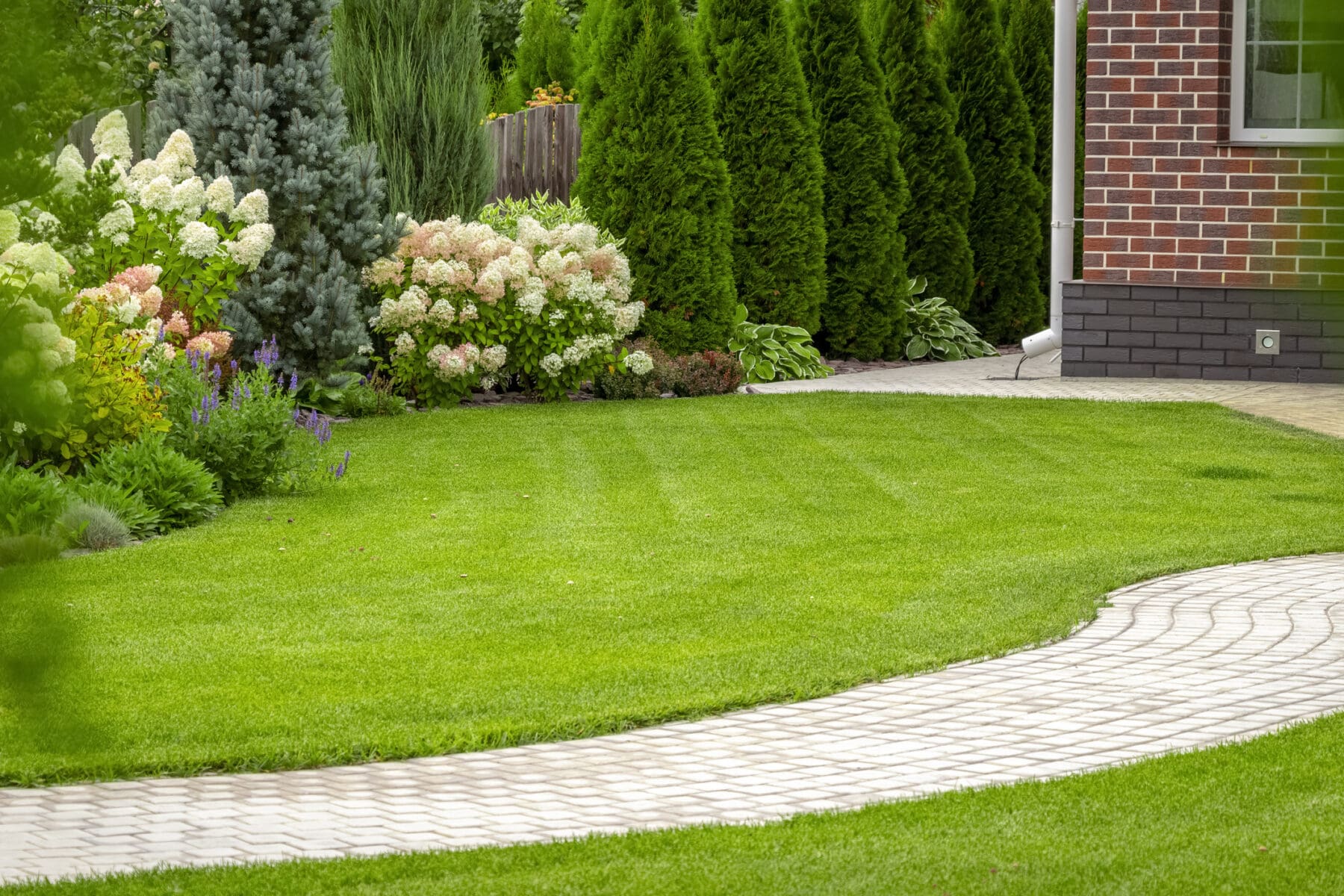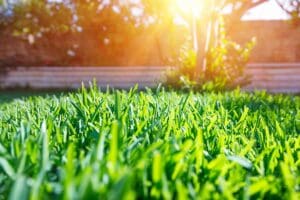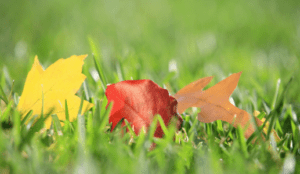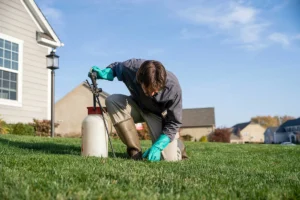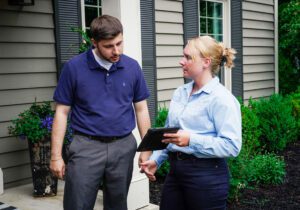Determining what your yard needs and when can make or break the health and appearance of your garden. Here are a few items to add to your yearly lawn care plan.
Lawn Care Treatment Plan
Item One: Aeration
Over time, lawns become compacted. Basically, the turf hardens up and makes it difficult for new grass to thrive. In residential lawns, compaction usually occurs when too much thatch builds up or there’s heavy foot traffic in the area. Compacted soil makes it difficult for water and nutrients to reach the turf roots. Signs your soil is compacted include puddling water, especially in low-lying areas; thin, patchy sections of grass; bare areas; your gardening tools cannot penetrate the earth easily, or you may notice a visibly thick layer of thatch—the solution: aeration. Also known as “core aeration,” this process uses a specialized tool that removes hundreds of tiny plugs from your lawn. These small plugs create holes that allow water, nutrients, and light to penetrate the earth and break up the hard compacted soil. The plugs are then scattered across the lawn, where they will naturally break down and serve as fertilizer.
Optional: Overseeding. If soil compaction has caused thinning or bare batches, this can easily be remedied with an overseeding application. A layer of turfgrass seed is scattered on the soil’s surface, where it will take root and fill in problem areas. This is ideal to do simultaneously as aeration since the holes allow grass seed to get down into the earth and be protected while it takes root.
Item Two: Fertilization
Before purchasing fertilizer, you’ll want to have a professional assess your lawn’s needs. Depending on the soil’s pH level, your lawn may or may not be receptive to nutrients. If it leans to the acidic side, you will need to correct this by adding lime. Otherwise, you’ll waste money on any fertilizers you apply. After you’ve determined the soil is receptive to nutrients, it’s time to select a fertilizer. This step is a unique one for your lawn care schedule, as you can essentially kill two birds with one stone. Products known as “weed and feed” let you fertilize your lawn while applying a pre-emergent herbicide. This is lawn care lingo, which means the chemical will knock out weeds before they sprout. Herbicides intended for use on lawns are selective, which means they only target weeds. As such, you won’t have to worry about accidentally killing your grass. If you’d prefer not to use synthetic chemicals at all, there are organic fertilizer options at your disposal.
Item Three: Grub Control
Like many things related to lawn care, what goes on beneath the soil can play a major role in your lawn’s health. Grubs are one such factor. The larvae of beetles, these critters hatch below the surface and love nothing more than chowing down on the roots of your grass.
You may not spot them directly since they dwell below the soil, but it could indicate grub activity if you notice any of the following.
- Irregular, brown patches appearing in random spots on your lawn
- Soft, spongy grass that pulls up easily
- An increase in activity of raccoons, moles, and birds digging in your turf
Grub control can easily be applied as part of the fertilization step. Ask your lawn care professional if you should treat for grubs next year.
Item Four: Pest Control
Yes, grubs are pests, but they don’t bother humans. Well, ruining the lawn may bother you, but they’re not the flying, stinging, bitey kind of pests. You don’t have to suffer through mosquitoes, ticks, and other bugs.
Opting for perimeter pest control will keep all of the nastiest creep-crawlies from your yard and home.
- Ants
- Boxelder bugs
- Centipedes
- Earwigs
- Fleas
- Millipedes
- Spiders
- Ticks
Applications are applied every four to six weeks throughout the season, so you’ll never have a gap in coverage. In addition to treating your yard, take a look around and see if you can eliminate any areas where pests love to lurk.
- Old tires, buckets, kiddie swimming pools, or other areas where water is allowed to pool
- Clogged gutters and downspouts
- Windows with holes in screens
- Cracks around the exterior of the home
Item Five: Trees And Shrubs
The three key components of tree and shrub care are 1) nutrients, 2) Insecticide 3) Pruning. Trees are hearty, but even they need a little extra food from time to time. Whether that comes in the form of mulch, deep-root fertilization, or a topical application depends on your trees’ specific needs, which your lawn care professional can assess. Insecticides keep pests from eating the leaves and making their home on the branches, and anti-fungal/antibacterial options prevent the tiniest pests of all. Pruning helps trees and shrubs keep a desirable shape and protects your home, garage, or other property from dangerous branches.
Complete Your Lawn Care Checklist With The Pros At Top Lawn
Ticking off the services on your checklist is easy when you choose Top Lawn. Our team of experts provides the highest quality aeration, lawn fertilization, grub control, tree and shrub care, and pest control solutions. Call (248) 956-6022 or contact us online to schedule lawn care services. Check out our monthly blog for more gardening and lawn care tips and ideas. For the latest deals and offerings, be sure to follow us on Facebook and Twitter!

